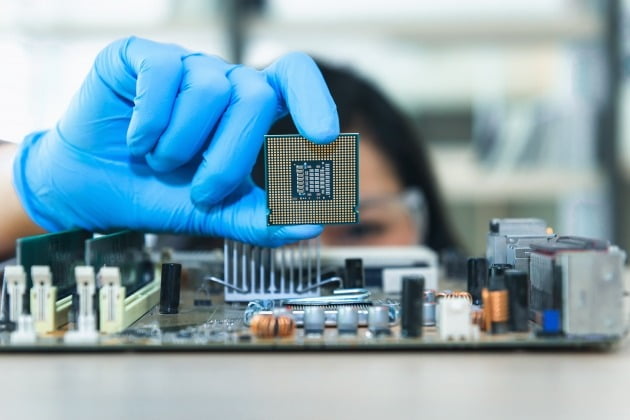Wuhan Hongshin Semiconductor’s closing procedure to attract 1280 yuan investment
Government funds already invested 2 trillion won into the air

Photo = Getty Image Bank
China’s large-scale semiconductor business, which had an investment plan reaching around 20 trillion won, is going to liquidation after a year of suspension.
According to Chaishin, a media specialized in economics on the 1st, Wuhan Hongshin Semiconductor (HSMC), owned by Wuhan City, recently requested 240 all employees to leave the company without plans to restart the company.
The company was founded in Wuhan in 2017 to manufacture system semiconductors using ultra-fine processes of 7 nanometers (nm) or less. It proposed 122.8 billion yuan (about 22 trillion won) to attract total investment, and received 15.3 billion yuan (about 2.5 trillion won) from the central government and Wuhan city. It also attracted attention from the semiconductor industry by recruiting Jang Sang-i, who led the development of microprocessing at TSMC, Taiwan, as the CEO, the world’s number one foundry (consignment of semiconductor production).
However, as the project faced a financial shortage from the initial stage of the project, the project began to drift, and the incident of land seizure by creditors made it difficult to recover. The exposure that HSMC introduced from the Dutch ASML at the end of 2019, which was widely publicized, was also an out-of-date device that was seized by creditors. From the outset, pointed out that it was a scam aimed at the Chinese government’s semiconductor policy funding has been continuously raised. In China, semiconductor project scams using the central government’s support and local government’s excessive motives are on the rise.
When CEO Jang Sang-i left last year, he said, “I couldn’t access company information. It was a nightmare.” He moved to China’s largest foundry company, Zhongxin Guoji (SMIC).
The Wuhan municipal government, which designated HSMC as a key project, directly acquired the company in August of last year. As a result, the possibility of rehabilitation was briefly discussed, but it is analyzed that the liquidation procedure was finally started with the notification of dismissal.
China has high competitiveness in various high-tech fields such as artificial intelligence (AI), fifth-generation (5G) communications, and unmanned aerial vehicles, but the semiconductors that are the basis of these industries are still being evaluated as weak. Huawei, which used to be the world’s No. 1 telecommunications equipment and second-largest smartphone, is staggering as it is unable to purchase semiconductors using US technology or equipment due to US sanctions. .
In China, there are some companies such as SMIC and Tsinghua Unigroup-affiliated memory semiconductor maker Changchang Chunchu (YMTC). However, the products made by these companies are far from the level of advanced products, and the production volume is still insignificant when compared to the global market size.
China has declared a’semiconductor rollout’ that will raise its domestic semiconductor production rate (self-sufficiency rate) to 70% by 2025. In addition, it created a national semiconductor industry investment fund worth 139 billion yuan in 2014. In September of last year, it spent 204 billion yuan (about 34 trillion won) to create a second semiconductor fund. Including local government and private investment, more than 200 billion yuan (about 33 trillion won) is expected to flow into the semiconductor industry every year by 2025.
However, last year’s self-sufficiency rate (proportion of domestic production) was 15.9%, a mere 0.3 percentage point increase from the previous year. Most of the semiconductors were produced by foreign companies at local factories in China, and the share of domestic companies remained at 5.9%.
Beijing = correspondent Kang Hyun-woo [email protected]
Ⓒ Hankyung.com prohibits unauthorized reproduction and redistribution
